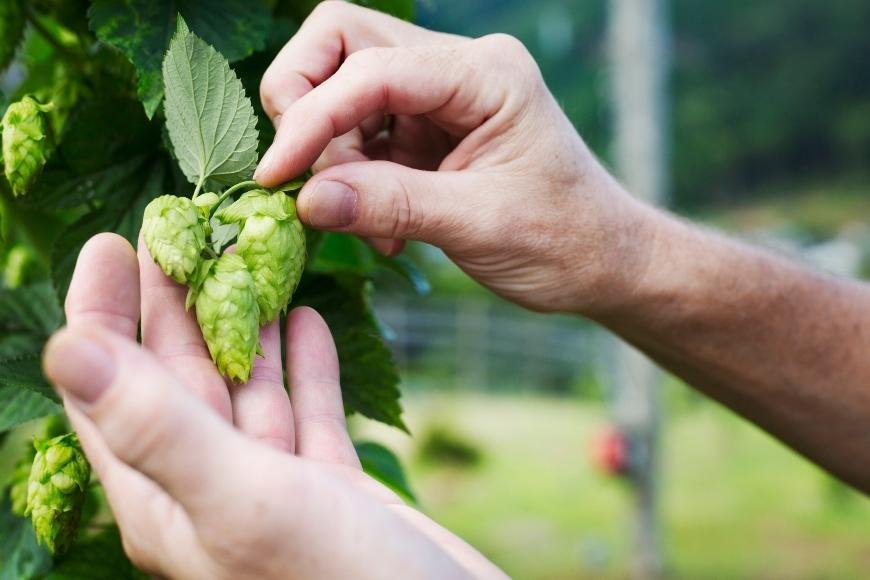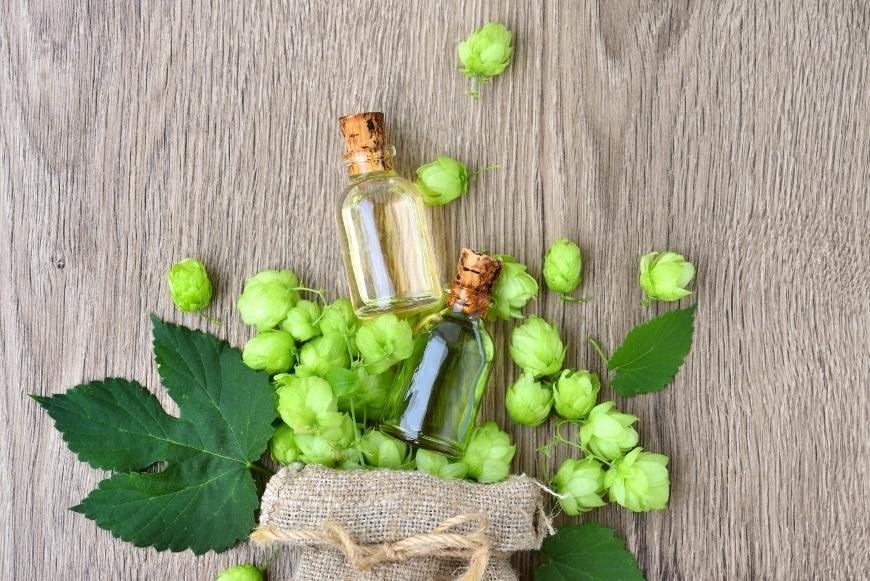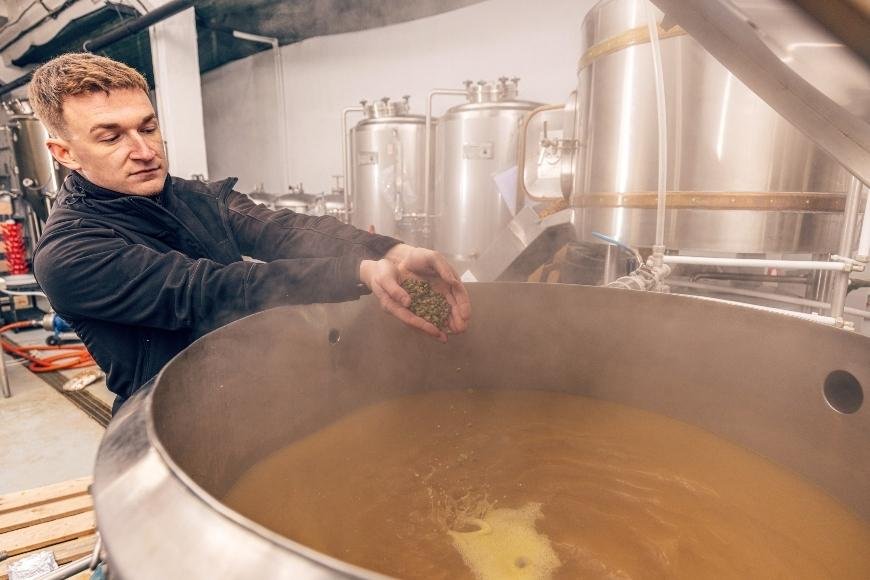How to Extract Hops
Learn how to extract hops with our beginner's guide, covering preparation, extraction, and storage for the best hop oils and aroma. Dive in today!

Are you curious about how to extract hops? You've found the ideal source of information. In this article, we'll investigate the world of hop extracts and take a look at different ways to get those flavorful components from your favorite varieties.
We'll begin by discussing what hops extraction is and why it's an essential process in creating unique beer flavors. Next, we'll outline the necessary equipment and materials required for successful extraction. Following that, we'll guide you through preparing your hops for extraction, as well as executing the actual process.
After mastering how to extract hops, we will discuss filtering and purifying techniques to ensure a high-quality end product. Lastly, proper storage methods will be covered so that your precious hop oils remain fresh and ready for use in future brewing endeavors.
Table of Contents:
- What is Hops Extraction?
- What You Need to Extract Hops
- Preparing the Hops
- Extracting the Hops
- Filtering and Purifying the Extract
- Storing Your Extract
- Final Thoughts on Hops Extraction
- A Few Key Takeaways:
- Conclusion
1. What is Hops Extraction?
Hops extraction refers to the process of isolating and concentrating the essential oils, flavors, and active compounds found in hops (Humulus lupulus). Hops have been traditionally used for beer brewing due to its preservative and flavor-enhancing properties, but now it is increasingly being explored for other applications. In recent years, however, many people have become interested in extracting hops for other purposes such as herbal medicine or recreational use.
The primary reason behind making an extract from hops is to obtain a concentrated form of its beneficial compounds like alpha acids (humulones), beta acids (lupulones), and various aromatic oils. These substances are known for their sedative effects that can help with relaxation, anxiety relief, sleep improvement, and even pain management. Additionally, some studies suggest that these compounds may also possess anti-inflammatory properties (source). By creating an extract from this versatile plant material you can experience these benefits without having to consume large quantities of raw hops.
- Why make an extract: Concentrate beneficial compounds for medicinal or recreational use.
- Potential benefits: Sedative effects; anxiety relief; improved sleep quality; pain management; anti-inflammatory properties.
- Uses: Herbal remedies; tinctures; teas; vaping liquids;
Hops extraction is a process that involves extracting the oils and resins from hops to create an extract. To facilitate this process, specific equipment and ingredients are required; these will be outlined in the following section.
2. What You Need to Extract Hops

Before diving into the hops extraction process, it's essential to gather all necessary materials and tools. This will ensure a smooth and efficient extraction experience. Here is a list of items you'll need:
- Hops: Fresh or dried whole cone hops are ideal for this process.
- Solvent: A high-proof alcohol like Everclear or food-grade ethanol works best for extracting the active compounds from hops.
- Glass jars with lids: These will be used for mixing the solvent with the hops and storing your extract later on. Make sure they're clean and sterilized before use.
- Cheesecloth or fine mesh strainer: This will help filter out any plant material during the extraction process, ensuring a pure final product.
- Funnels: You'll need these when transferring liquids between containers throughout various stages of extraction.
In addition to these basic materials, having some extra tools on hand can make your life easier during the extraction process. Consider investing in some of these optional items as well:
- A glass stirring rod: To mix your solution effectively without introducing contaminants.
- Rubber gloves & safety goggles: Protect yourself from potential spills by wearing appropriate protective gear.
If you don't have access to certain items listed above, don't worry. There are alternative methods available that utilize different solvents (such as vegetable glycerin). Once everything is set, it's time to start the process of drawing out the goodness from the hops.
To extract hops, you need to have the right equipment and ingredients. Once you have the necessary components, it's time to begin extracting the hops.
3. Preparing the Hops
Before you can extract the valuable compounds from hops, it's essential to prepare them properly. To ensure that the extraction process is effective and yields a superior product, proper preparation of hops is essential.
Selecting Your Hops
The first step in preparing hops for extraction is selecting the right variety. When selecting hops, it is important to consider the flavor and chemical composition of various hop varieties in order to achieve the desired outcome. It's crucial to choose a hop variety that aligns with your desired outcome - whether it be for brewing beer or creating a relaxing herbal supplement.
Drying Your Hops
Once you have selected the desired hop variety, it is necessary to dry them out before beginning the extraction procedure. Freshly harvested hops contain too much moisture, which can negatively impact the efficiency of your extraction method. To dry your hops:
- Spread them evenly on a clean surface such as paper towels or mesh screens.
- Avoid direct sunlight exposure during drying since UV rays can degrade some essential oils found in hops.
- Ensure proper air circulation by using fans or placing near an open window.
- Dry until they feel papery and light when squeezed gently between fingers (usually takes about three days).
Milling Your Dried Hops
To maximize yield during extraction, it's important to mill (grind) dried hops into smaller particles without turning them into powder form completely; this increases their surface area available for contact with solvents used later on while minimizing loss due to dust formation:
- Use a coffee grinder, blender, or food processor to grind your dried hops into small particles.
- Be cautious not to over-process the hops as it can create too much dust and negatively affect the extraction process.
Weighing Your Hops
Before proceeding with the extraction process, you'll need to weigh out an appropriate amount of milled hops. The quantity required will depend on factors such as desired potency and intended use for your extract. It's crucial to measure accurately using a digital scale capable of measuring in grams or ounces - this ensures consistent results across multiple batches.
Properly preparing the hops is essential for a successful extraction process. Now, let's move on to extracting the hops and see what we can learn about this fascinating process.
4. Extracting the Hops
In this section, we will dive into the process of extracting hops to obtain their valuable compounds. The extraction method we'll be using is called alcohol extraction, which involves using a high-proof alcohol as a solvent to dissolve and separate the desired components from the plant material.
Step 1: Choose Your Alcohol Solvent
The first step in hops extraction is selecting an appropriate alcohol solvent. Ideally, you should use food-grade ethanol with a proof of at least 190 (95% ABV). This type of alcohol ensures maximum solubility for your extract while minimizing impurities.
Step 2: Combine Hops and Alcohol Solvent
- Weigh out your dried hops: Measure out approximately 10 grams of dried hop cones or pellets per every 100ml of alcohol solvent that you plan on using.
- Add hops to jar: Place your measured-out hops into a clean glass jar with an air-tight lid.
- Pour in alcohol: Add enough high-proof alcohol to completely submerge the hop material by about one inch above its surface level inside the jar.
- Mix well: Stir thoroughly so that all parts of the plant matter come into contact with the liquid, ensuring even distribution throughout your solvent.
Step 3: Let the Mixture Sit and Shake Daily
Now that your hops are combined with the alcohol solvent, it's time to let them sit and extract. Store the jar in a cool, dark place away from direct sunlight for at least two weeks and shake it daily to maximize extraction. During this period, make sure to shake the jar gently once a day to encourage extraction of compounds from the plant material into the liquid.
Step 4: Strain Out Plant Material
After allowing sufficient time for extraction, you'll need to separate out any remaining solid plant matter from your liquid extract. To do this:
- Gather materials: Prepare a fine mesh strainer or cheesecloth along with another clean glass container (preferably one with an air-tight lid).
- Pour mixture through strainer: Carefully pour your hop-alcohol mixture through the strainer or cheesecloth into your second container, capturing all solids while letting only liquid pass through.
- Squeeze out excess liquid: Using gloves if necessary due to high alcohol content, press down on any remaining hop material within the strainer or cloth so as not to waste any precious extracted goodness.
You now have successfully completed extracting hops using alcohol. The next steps involve filtering and purifying your extract further before storing it properly for future use - but we will cover those topics in subsequent sections of our guide.
Obtaining the hops is a crucial action in constructing a superior brew, and with proper equipment and information it can be achieved promptly and effortlessly. Filtering and purifying this extract further will ensure that your beer has all of its desired flavors without any unwanted contaminants.
5. Filtering and Purifying the Extract

Once you have successfully extracted the hops, it's essential to filter and purify your extract for a more potent and enjoyable experience. This process removes any unwanted plant material or impurities that may be present in your extract.
A. Choosing the Right Filter
Selecting an appropriate filter is crucial for achieving optimal results during this stage of the extraction process. A filtration guide can help you choose between various types of filters based on their pore size, compatibility with solvents, and other factors.
B. Filtration Process
- Gather materials: Prepare a clean glass container (such as a mason jar), funnel, coffee filters or laboratory-grade filtration paper, rubber bands or clips to secure the filter in place.
- Secure the filter: Place your chosen filter into the funnel and secure it using rubber bands or clips so that it doesn't move during filtration.
- Pour slowly: Slowly pour your hops extract onto the center of your secured filter within the funnel; this will ensure even distribution across its surface area without overloading one section which could lead to tearing.
- Clean up residue:If there are visible residues left on top of filtered liquid after pouring entire contents through funnel-filter setup then repeat steps above until no more residue remains visible atop purified solution inside receiving vessel below (i.e., "clean break").
C. Evaporation Techniques for Further Purification
In some cases, you may want to further purify your hops extract by evaporating any remaining solvent. Two common methods for this are:
- Rotary Evaporator: A rotary evaporator, also known as a rotovap, is a laboratory instrument that allows controlled evaporation of solvents at reduced pressure and temperature.
- Vacuum Oven: A vacuum oven uses low-pressure conditions to gently remove residual solvents from the extract without exposing it to high temperatures that could degrade its quality. Check out this guide on how to use a vacuum oven.>
Note: Always follow safety guidelines when using these techniques or working with volatile solvents in general.
With proper filtration and purification, your hops extract will be free of impurities and ready for storage or consumption. Remember always to prioritize safety during the extraction process and enjoy responsibly.
6. Storing Your Extract
Now that you have successfully extracted the hops, it's essential to store your extract properly to maintain its potency and ensure safe usage. In this section, we will guide you through the best practices for storing your hops extract.
Airtight Containers
The first step in storing your extract is choosing an appropriate container. A high-quality airtight container is crucial as it prevents air from entering and oxidizing the compounds in the extract, which can lead to degradation of its quality over time. Glass containers with tight-fitting lids are ideal since they do not react with or absorb any chemicals from the extract.
Dark and Cool Environment
Hops extracts should be stored in a dark environment away from direct sunlight or artificial light sources because exposure to light can also cause oxidation and loss of potency. Store your containers in a cool, dark place with temperatures stable between 60-70°F (15-21°C) to maintain the consistency and effectiveness of hops extracts. Extreme temperature fluctuations may affect the consistency and effectiveness of your hops extracts.
Labeling Your Containers
- Date: Make sure to label each container with the date when you prepared the extraction so that you know how long it has been stored.
- Type: If you have multiple types of hop varieties, indicate on each label which variety was used for that specific batch.
- Potency: It's helpful to note down any information about potential potency differences between batches if known - this way, users can adjust their dosage accordingly based on personal preferences or desired effects.
Freezing for Long-term Storage
If you plan on storing your hops extract for an extended period, consider freezing it in small portions. Freezing helps to preserve the potency and quality of the extract over time by slowing down oxidation processes. Just make sure to use freezer-safe containers or wrap your extracts tightly with parchment paper before placing them into airtight bags or containers.
Preserve its quality and strength by keeping your extract in a cool, shadowy area. With that being said, let's move on to the next heading which will cover some final thoughts about hops extraction.
7. Final Thoughts on Hops Extraction
Hops extraction is an exciting and rewarding process that allows you to unlock the full potential of various hop varieties. Creating your own hop extracts can bring out the best in your beer or other creations with hops, adding more flavor and aroma to them.
A Few Key Takeaways:
- Choose the right hops: Selecting high-quality hops with desirable characteristics will result in a more potent and flavorful extract. Experiment with different types of pelletized hops or whole hop cones to find your favorite variety.
- Safety first: Always use proper safety equipment when working with solvents during the extraction process. This includes gloves, goggles, and a well-ventilated workspace.
- Precision matters: Accurate measurements are crucial for achieving consistent results in your extractions. Invest in quality tools like digital scales and graduated cylinders to ensure precise measurements every time.
- Dry hopping vs CO2 Hop Extracts: Dry hopping adds raw pelletized hops directly into the brewing process while using CO2 hop extracts provides a concentrated form which gives better control over bitterness levels without affecting clarity or stability of beers.
To further expand your knowledge about this fascinating plant and its compounds, check out resources such as online forums where fellow enthusiasts share their experiences with extracting hop oils. Additionally, explore scientific articles discussing topics like hop creep and the various hop compounds that contribute to its unique aroma and flavor profiles.
Conclusion
Extracting hops can be a rewarding and exciting process for any home brewer. With the right knowledge, equipment, and safety precautions in place you can create an extract that is both pure and potent. Armed with the right knowledge, equipment and safety measures, you can now confidently embark on your hop extraction adventure. So go ahead - grab some hops and start extracting today.






































































































































